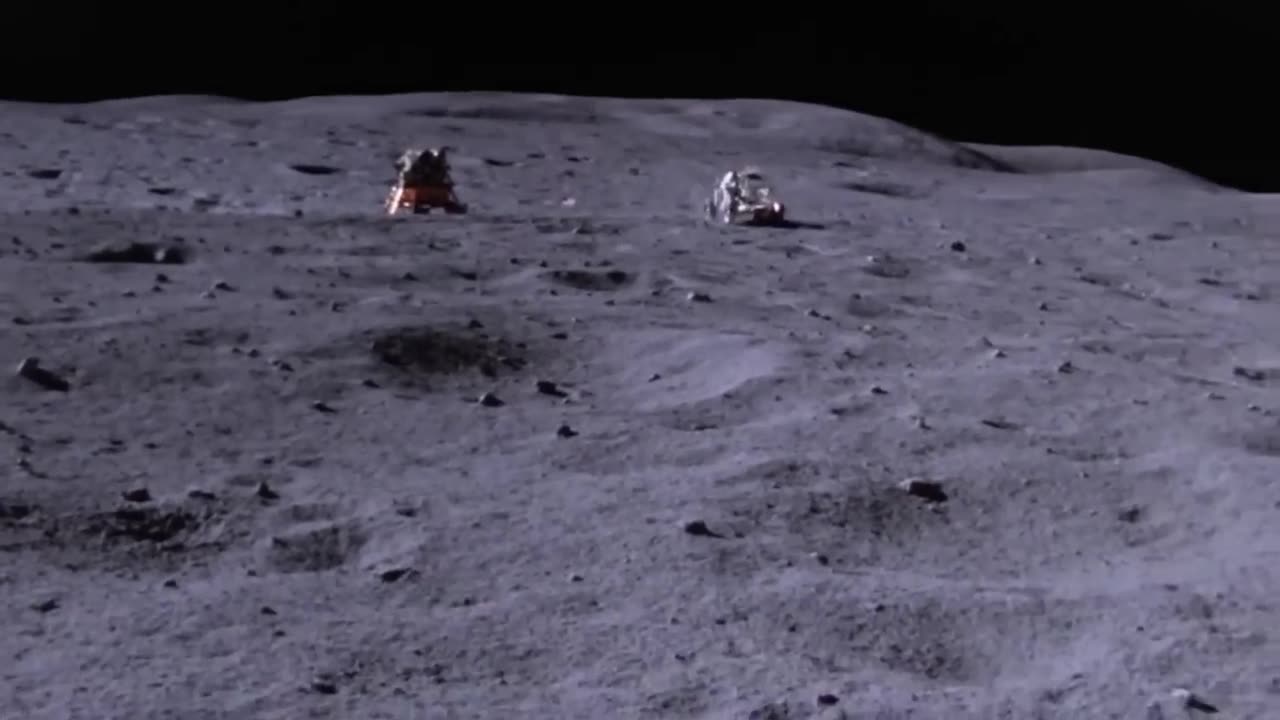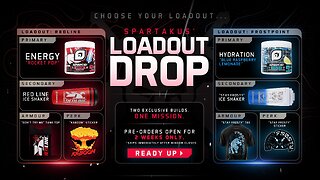Premium Only Content

Lunar rover vehicle on Moon - 1969
The Lunar Roving Vehicle (LRV) is a battery-powered four-wheeled rover used on the Moon in the last three missions of the American Apollo program (15, 16, and 17) during 1971 and 1972. It is popularly called the Moon buggy, a play on the terms dune buggy.
Built by Boeing, each LRV has a mass of 460 pounds (210 kg) without payload. It could carry a maximum payload of 1,080 pounds (490 kg), including two astronauts, equipment, and lunar samples, and was designed for a top speed of 8 miles per hour (13 km/h), although it achieved a top speed of 11.2 miles per hour (18.0 km/h) on its last mission, Apollo 17.
Each LRV was carried to the Moon folded up in the Lunar Module's Quadrant 1 Bay. After being unpacked, each was driven an average of 30 km, without major incident. These three LRVs remain on the Moon.
Features and specifications
The Apollo Lunar Roving Vehicle was an electric-powered vehicle designed to operate in the low-gravity vacuum of the Moon and to be capable of traversing the lunar surface, allowing the Apollo astronauts to extend the range of their surface extravehicular activities. Three LRVs were used on the Moon: one on Apollo 15 by astronauts David Scott and Jim Irwin, one on Apollo 16 by John Young and Charles Duke, and one on Apollo 17 by Eugene Cernan and Harrison Schmitt. The mission commander served as the driver, occupying the left-hand seat of each LRV. Features are available in papers by Morea, Baker, Kudish.
Mass and payload
The Lunar Roving Vehicle had a mass of 460 pounds (210 kg), and was designed to hold a payload of 1,080 pounds (490 kg). This resulted in weights in the approximately one-sixth g on the lunar surface of 77 pounds-force (35 kgf) empty (curb weight) and 255 pounds-force (115.7 kgf) fully loaded (gross vehicle weight). The frame was 10 feet (3.0 m) long with a wheelbase of 7.5 feet (2.3 m). The height of the vehicle was 3.6 feet (1.1 m). The frame was made of 2219 aluminium alloy tubing welded assemblies and consisted of a three-part chassis that was hinged in the center so it could be folded up and hung in the Lunar Module Quadrant 1 bay, which was kept open to space by omission of the outer skin panel. It had two side-by-side foldable seats made of tubular aluminium with nylon webbing and aluminum floor panels. An armrest was mounted between the seats, and each seat had adjustable footrests and a Velcro-fastened seat belt. A large mesh dish antenna was mounted on a mast on the front center of the rover. The suspension consisted of a double horizontal wishbone with upper and lower torsion bars and a damper unit between the chassis and upper wishbone. Fully loaded, the LRV had a ground clearance of 14 inches (36 cm).
Control and navigation
A T-shaped hand controller situated between the two seats controlled the four drive motors, two steering motors, and brakes. Moving the stick forward powered the LRV forward, left and right turned the vehicle left or right, and pulling backwards activated the brakes. Activating a switch on the handle before pulling back would put the LRV into reverse. Pulling the handle all the way back activated a parking brake. The control and display modules were situated in front of the handle and gave information on the speed, heading, pitch, and power and temperature levels.
Navigation was based on continuously recording direction and distance through use of a directional gyro and odometer and feeding this data to a computer that would keep track of the overall direction and distance back to the LM. There was also a Sun-shadow device that could give a manual heading based on the direction of the Sun, using the fact that the Sun moved very slowly in the sky.
-
 8:28
8:28
MattMorseTV
14 hours ago $6.81 earnedThe EU just SURRENDERED to Trump.
29.2K43 -
 2:09:17
2:09:17
Side Scrollers Podcast
19 hours agoKirsche & Leaflit on HIT LIST + Nintendo RUINS Mario Kart + More | Side Scrollers Live
18.1K5 -
 14:17
14:17
GritsGG
1 day agoCopy Our Strategy We Use to Win & Instantly Improve!
19.4K2 -
 6:08:23
6:08:23
The Pascal Show
19 hours ago $3.52 earnedDIDDY TRIAL LIVE! HERE WE GO! Feds Begin Closing Arguments Trial Day 31 & MORE
19.6K3 -
 3:24:49
3:24:49
GamerGril
8 hours agoTGI-FrightDay | A Gril Among Us
23.7K6 -
 1:19:26
1:19:26
Man in America
14 hours agoIs MAHA Pushing the WEF’s Wearable Agenda? w/ Dr. Ealy
123K92 -
 8:35:28
8:35:28
SpartakusLIVE
13 hours agoNEW Loadouts have DROPPED from ADVANCEDgg || !advanced
81.1K4 -
 30:28
30:28
Solar Groove Muzic
1 day ago $9.99 earnedAFRO HOUSE MIX 2025 | The Best of Afro House Music
51.4K5 -
 41:00
41:00
The Finance Hub
20 hours ago $7.46 earnedI CAN'T BELIEVE WHAT JUST HAPPENED TO SEN. ADAM SCHIFF!
29.7K22 -
 3:52:16
3:52:16
SynthTrax & DJ Cheezus Livestreams
1 day agoFriday Night Synthwave 80s 90s Electronica and more DJ MIX Livestream HEATWAVE Edition
55.1K16